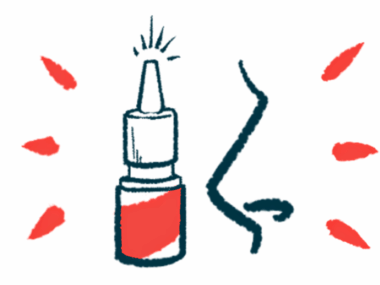#ACTRIMS2019 – Cerebrospinal Fluid, Meninges Inflammation Profile Can Stratify MS Patients
Written by |

A method based on cerebrospinal fluid measurements and magnetic resonance imaging (MRI) can aid in stratifying patients with multiple sclerosis (MS) at the time of diagnosis, which may help identify a tailored therapeutic approach for each patient from early disease stages.
The data was presented by Roberta Magliozzi, from the University of Verona, Italy, on March 2 at the 4th Annual Americas Committee for Treatment and Research in Multiple Sclerosis (ACTRIMS) Forum, in Dallas, Texas. The presentation was titled “Immunobiological and radiological markers of MS endophenotypes.”
Degeneration of cerebral grey matter — the major component of the nervous system, consisting of neuron cell bodies — is well-tied to MS disease progression. Indeed, the speed at which MS develops physically and cognitively in both relapsing and progressive stages of the disease is tied to the degree of cerebral grey matter degeneration.
However, although it is known that cell loss and inflammation are involved, how exactly these grey matter lesions occur, and how to best image them through magnetic resonance imaging (MRI) is poorly characterized.
According to Magliozzi, “progressive MS cases with higher degree of meningeal inflammation present increased level of grey matter” demyelination (loss of myelin, the protective coat surrounding neurons and a hallmark of MS).
Concerning the cerebrospinal fluid inflammatory pattern found, the team further showed that CXCL13 (a biomarker of inflammation) was the most predictive marker of the number of relapses in patients, and the appearance of MRI lesions.
Overall, the results suggested that greater inflammation in cerebrospinal fluid and meninges is linked with a greater degree of disease progression and cortical damage, both at time of diagnosis and at death.
“A specific combined cerebrospinal fluid and MRI pattern might represent a useful surrogate marker of meningeal inflammation able to stratify MS patients according to the level of intrathecal inflammation and cortical lesion load at diagnosis,” the team concluded.





